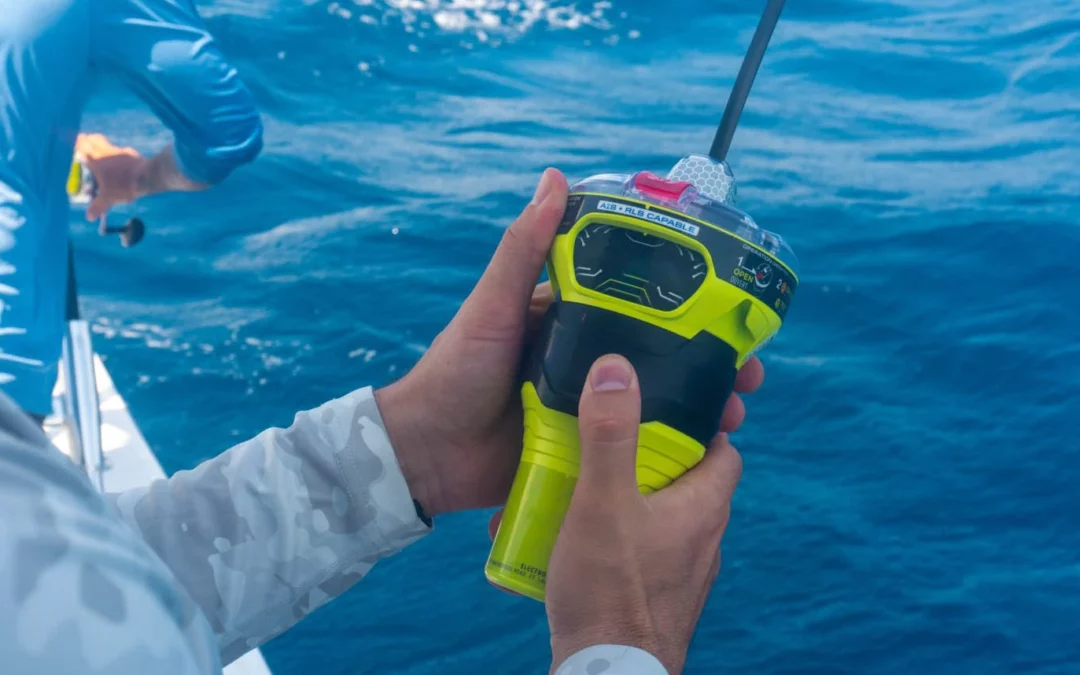
by Barani Chettiar | May 7, 2024 | Uncategorized
Introduction:
In the vast expanse of the world’s oceans, where unforeseen emergencies can arise at any moment, having reliable safety equipment onboard vessels is paramount. Among these lifesaving tools, the Emergency Position Indicating Radio Beacon (EPIRB) stands out as a beacon of hope, capable of alerting rescue authorities to distress situations and guiding them to those in need. In this article, we’ll explore the pivotal role of EPIRB in marine safety, from its definition and functioning to its regulatory requirements, benefits, limitations, and real-life success stories.
Definition of EPIRB:
An EPIRB is a distress signaling device designed to transmit a distress signal on designated frequencies when activated. These compact and rugged devices are equipped with built-in GPS receivers, allowing them to transmit the vessel’s precise location to search and rescue authorities, significantly enhancing the chances of a successful rescue operation.
Importance of Marine Safety Equipment:
Marine safety equipment plays a crucial role in safeguarding the lives of sailors, fishermen, and maritime adventurers alike. In the event of emergencies such as vessel sinking, fire, collision, or medical crises, having access to reliable safety equipment can mean the difference between life and death.
Brief History of EPIRB Technology:
The development of EPIRB technology can be traced back to the early 1970s when satellite-based search and rescue systems were first introduced. Over the decades, advancements in satellite communication and GPS technology have greatly improved the accuracy and effectiveness of EPIRBs in distress situations.
How EPIRB Works:
When activated, EPIRBs emit a distress signal on internationally recognized frequencies, which are detected by satellites in orbit. These satellites relay the distress signal to ground stations, which then notify rescue coordination centers of the distress situation and the vessel’s location. Search and rescue teams are then dispatched to the coordinates provided by the EPIRB to render assistance.
Regulations and Requirements:
EPIRBs are subject to international standards and legal obligations for maritime vessels. These regulations mandate the installation and maintenance of EPIRBs on certain types of vessels, including commercial ships, fishing vessels, and recreational boats, depending on their size and intended use. Compliance with these regulations is essential for ensuring the safety of maritime operations and facilitating timely rescue efforts.
Benefits of EPIRB:
The use of EPIRBs offers several benefits in distress situations. Firstly, EPIRBs provide a rapid and reliable means of alerting search and rescue authorities to emergencies, even in remote or offshore locations where traditional communication methods may be unavailable. Secondly, the integration of GPS technology in modern EPIRBs ensures accurate positioning information, expediting the response time of rescue operations and increasing the likelihood of successful outcomes.
Case Studies and Success Stories:
The effectiveness of EPIRBs in distress situations is exemplified through numerous real-life rescue stories where the timely activation of these devices has saved lives. From solo sailors stranded in remote oceans to fishing crews battling storms at sea, EPIRBs have played a crucial role in alerting authorities to distress situations and guiding rescuers to their locations.
Limitations and Considerations:
Despite their effectiveness, EPIRBs have certain limitations and considerations that users should be aware of. These include factors such as battery life and maintenance requirements, as well as the risk of false alarms and misuse. Proper training, regular testing, and adherence to manufacturer guidelines are essential for maximizing the reliability and effectiveness of EPIRBs.
Conclusion:
In conclusion, the Emergency Position Indicating Radio Beacon (EPIRB) serves as a vital tool for enhancing marine safety and saving lives at sea. By providing a rapid and reliable means of alerting search and rescue authorities to distress situations, EPIRBs significantly increase the chances of survival for sailors, fishermen, and maritime adventurers facing emergencies on the water. As an essential component of marine safety equipment, the use of EPIRBs is not only mandated by international regulations but also represents a proactive approach to ensuring the safety and security of maritime operations worldwide. Whether sailing across oceans or fishing in coastal waters, having an EPIRB onboard can mean the difference between a successful rescue and a tragic outcome.
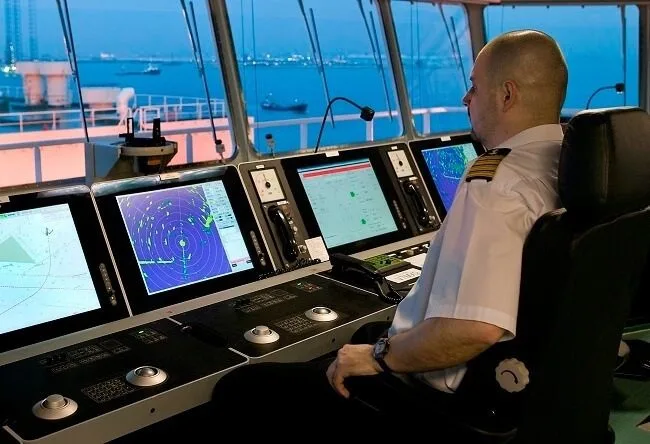
by Barani Chettiar | May 5, 2024 | Uncategorized
1. Importance of VHF Antennas for Marine Communication
In the vast expanse of the world’s oceans, effective communication is essential for safe and efficient navigation. VHF (Very High Frequency) antennas serve as the backbone of marine communication systems, enabling sailors to exchange vital information with other vessels, shore stations, and emergency services. These antennas facilitate the transmission and reception of VHF radio signals, allowing boaters to communicate navigational intentions, weather updates, and distress calls, thereby enhancing safety and coordination on the water.
2. Understanding the Difference Between Commercial and Recreational Use
Commercial and recreational boaters have distinct communication needs influenced by factors such as vessel size, operating environment, and regulatory requirements. Commercial vessels, such as cargo ships, fishing fleets, and passenger ferries, rely on robust communication systems to coordinate complex operations, comply with maritime regulations, and ensure the safety of crew and cargo. In contrast, recreational boaters may prioritize ease of use, affordability, and additional features such as AIS (Automatic Identification System) for enhanced situational awareness and collision avoidance.
3. Factors to Consider When Choosing an Antenna
Selecting the right VHF antenna requires careful consideration of several factors to ensure optimal performance and compatibility with the vessel’s requirements:
- Frequency Range: Ensure that the antenna is tuned to the VHF frequency band commonly used for marine communication (around 156-162 MHz).
- Gain: Consider the antenna’s gain, which determines its ability to transmit and receive signals efficiently over a specific range.
- Construction and Durability: Look for antennas constructed from high-quality materials such as fiberglass or stainless steel, capable of withstanding exposure to saltwater, UV radiation, and harsh weather conditions.
- Mounting Options: Evaluate the available mounting options, such as mast mounting, rail mounting, or deck mounting, to ensure compatibility with your vessel’s configuration.
- Cable Length: Choose an antenna with an appropriate cable length to reach your VHF radio without excessive slack or tension.
- Brand Reputation: Consider reputable brands known for their quality, reliability, and customer support services.
4. Types of Marine VHF Antennas Available
Several types of marine VHF antennas are available to suit different vessel types, operating conditions, and communication requirements:
- Fiberglass Whip Antennas: Durable and relatively affordable, fiberglass whip antennas are popular among recreational boaters for their versatility and ease of installation.
- Collinear Antennas: Collinear antennas feature multiple elements stacked vertically, offering increased gain and range for long-distance communication.
- Marine Band Antennas: Specifically designed for marine use, marine band antennas are optimized for VHF frequencies and often feature rugged construction and weatherproofing.
- Directional Antennas: Directional antennas, such as Yagi or Log-Periodic antennas, offer enhanced performance in specific directions, making them suitable for point-to-point communication or extending range in a particular direction.
5. Installation and Maintenance Tips
Proper installation and maintenance are crucial for maximizing the performance and longevity of marine VHF antennas:
- Location: Mount the antenna in a location that provides a clear line of sight to maximize signal coverage and minimize interference.
- Grounding: Ensure proper grounding to protect against static discharge and electrical interference.
- Cable Routing: Route antenna cables away from sources of electrical noise and avoid sharp bends or kinks that could degrade signal quality.
- Regular Inspection: Periodically inspect the antenna for signs of damage, corrosion, or loose connections, and address any issues promptly to prevent performance degradation.
6. Benefits of Selecting the Right Antenna
Choosing the right marine VHF antenna offers several benefits:
- Reliable Communication: A high-quality antenna ensures clear and consistent communication, enhancing safety and coordination on the water.
- Extended Range: Antennas with higher gain or directional capabilities can extend the range of communication, enabling communication over longer distances or in challenging conditions.
- Durability: Well-constructed antennas designed for marine environments withstand exposure to saltwater, UV radiation, and harsh weather conditions, ensuring long-term reliability and performance.
7. Conclusion: Making an Informed Decision
In conclusion, selecting the right VHF antenna is essential for ensuring reliable communication and safety on the water, whether for commercial or recreational use. By considering factors such as frequency range, gain, construction, mounting options, and maintenance requirements, boaters can choose an antenna that meets their specific communication needs and vessel requirements. Investing in a quality antenna and ensuring proper installation and maintenance will enhance the effectiveness and longevity of your marine communication system, providing peace of mind and confidence during every voyage.
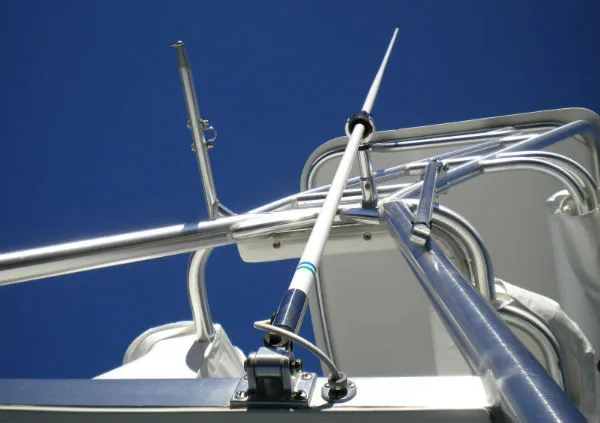
by Barani Chettiar | May 4, 2024 | Uncategorized
1. Importance of VHF Antennas for Marine Communication
In the realm of maritime communication, VHF (Very High Frequency) antennas play a pivotal role in ensuring reliable and efficient communication between vessels, shore stations, and emergency services. These antennas facilitate the transmission and reception of VHF radio signals, allowing boaters to communicate critical information such as position, navigation intentions, and distress calls, thereby enhancing safety and coordination on the water.
2. Understanding the Difference Between Commercial and Recreational Use
Commercial and recreational vessels have distinct communication requirements, which influence the selection of VHF antennas. Commercial vessels, such as cargo ships, fishing boats, and passenger ferries, typically require robust and high-performance antennas capable of long-range communication and continuous operation in demanding maritime environments. On the other hand, recreational boaters may prioritize factors such as compact size, ease of installation, and affordability when choosing VHF antennas for leisurely cruising or fishing trips.
3. Factors to Consider When Choosing an Antenna
Several factors should be considered when selecting a marine VHF antenna:
- Frequency Range: Ensure that the antenna is compatible with the VHF frequency range used for marine communication (usually around 156-162 MHz).
- Gain: Consider the antenna’s gain, which determines its ability to transmit and receive signals efficiently over a specific range.
- Construction and Durability: Look for antennas constructed from high-quality materials such as fiberglass or stainless steel, capable of withstanding exposure to saltwater, UV radiation, and harsh weather conditions.
- Mounting Options: Evaluate the available mounting options, such as mast mounting, rail mounting, or deck mounting, to ensure compatibility with your vessel’s configuration.
- Cable Length: Choose an antenna with an appropriate cable length to reach your VHF radio without excessive slack or tension.
- Brand Reputation: Consider reputable brands known for their quality, reliability, and customer support services.
4. Types of Marine VHF Antennas Available
There are several types of marine VHF antennas available, each suited to different vessel types and communication requirements:
- Fiberglass Whip Antennas: Durable and relatively affordable, fiberglass whip antennas are popular among recreational boaters for their versatility and ease of installation.
- Collinear Antennas: Collinear antennas feature multiple elements stacked vertically, offering increased gain and range for long-distance communication.
- Marine Band Antennas: Specifically designed for marine use, marine band antennas are optimized for VHF frequencies and often feature rugged construction and weatherproofing.
- Directional Antennas: Directional antennas, such as Yagi or Log-Periodic antennas, offer enhanced performance in specific directions, making them suitable for point-to-point communication or extending range in a particular direction.
5. Installation and Maintenance Tips
Proper installation and maintenance are crucial for maximizing the performance and longevity of marine VHF antennas:
- Location: Mount the antenna in a location that provides a clear line of sight to maximize signal coverage and minimize interference.
- Grounding: Ensure proper grounding to protect against static discharge and electrical interference.
- Cable Routing: Route antenna cables away from sources of electrical noise and avoid sharp bends or kinks that could degrade signal quality.
- Regular Inspection: Periodically inspect the antenna for signs of damage, corrosion, or loose connections, and address any issues promptly to prevent performance degradation.
6. Benefits of Selecting the Right Antenna
Choosing the right marine VHF antenna offers several benefits:
- Reliable Communication: A high-quality antenna ensures clear and consistent communication, enhancing safety and coordination on the water.
- Extended Range: Antennas with higher gain or directional capabilities can extend the range of communication, enabling communication over longer distances or in challenging conditions.
- Durability: Well-constructed antennas designed for marine environments withstand exposure to saltwater, UV radiation, and harsh weather conditions, ensuring long-term reliability and performance.
7. Conclusion: Making an Informed Decision
In conclusion, selecting the right marine VHF antenna is essential for ensuring reliable communication and safety on the water, whether for commercial or recreational use. By considering factors such as frequency range, gain, construction, mounting options, and maintenance requirements, boaters can choose an antenna that meets their specific communication needs and vessel requirements. Investing in a quality antenna and ensuring proper installation and maintenance will enhance the effectiveness and longevity of your marine communication system, providing peace of mind and confidence during every voyage.
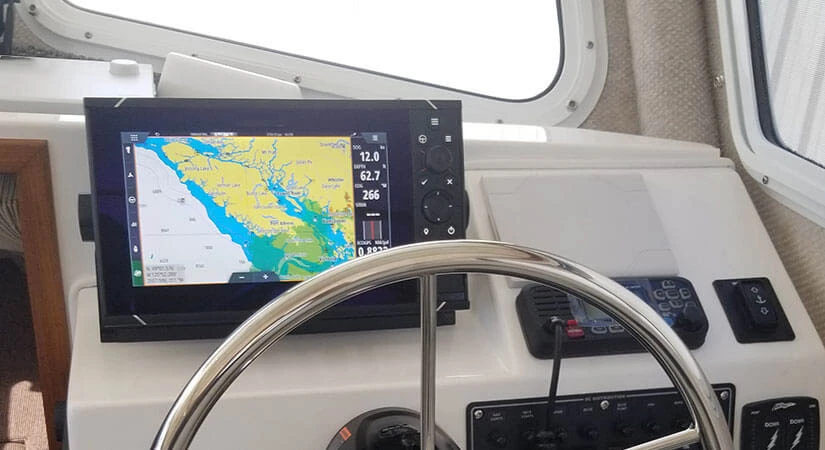
by Barani Chettiar | May 3, 2024 | Uncategorized
Choosing the Right Marine GPS System for Navigation and Positioning
Introduction: Importance of Marine GPS Systems
Navigating the open waters can be both exhilarating and challenging, especially when venturing into unfamiliar territories or facing adverse weather conditions. In such situations, having a reliable marine GPS (Global Positioning System) system is essential for ensuring accurate navigation, precise positioning, and overall safety on the water. In this article, we’ll explore the factors to consider when choosing the right marine GPS system to meet your navigation and positioning needs.
Overview of Navigation and Positioning Needs
Marine GPS systems serve as invaluable tools for boaters, providing real-time positioning information, route planning capabilities, and navigation assistance. Whether cruising along coastal waters, navigating through busy harbors, or embarking on offshore voyages, boaters rely on GPS systems to maintain course, avoid hazards, and reach their destinations safely. Additionally, marine GPS systems offer features such as waypoint marking, chart plotting, and AIS (Automatic Identification System) integration, further enhancing navigational capabilities on the water.
Types of Marine GPS Systems
When it comes to marine GPS systems, boaters have a choice between handheld and fixed-mount units, each offering unique advantages depending on the intended use and preferences.
- Handheld GPS Units: Portable and versatile, handheld GPS units are ideal for small vessels, kayaks, or recreational boating activities. They offer flexibility in usage, allowing boaters to carry them ashore or use them in multiple vessels.
- Fixed-Mount GPS Units: Fixed-mount GPS units are permanently installed on the boat’s dashboard or helm station. They typically offer larger screens, more advanced features, and seamless integration with other onboard electronics, making them suitable for larger vessels and professional maritime applications.
Key Features to Consider
When selecting a marine GPS system, several key features should be taken into account to ensure optimal performance and usability:
- Accuracy: Look for GPS systems with high-accuracy receivers capable of providing precise positioning data, even in challenging environments such as narrow channels or dense urban areas.
- Display Type: Consider the size, resolution, and readability of the display screen, especially in bright sunlight or low-light conditions. Touchscreen displays offer intuitive navigation, while button-operated interfaces may be preferable for use in wet or rough conditions.
- Connectivity Options: Evaluate the connectivity options offered by the GPS system, including compatibility with external sensors, chartplotter integration, and wireless connectivity for data sharing and software updates.
Factors Influencing Choice
Several factors may influence the choice of a marine GPS system, including:
- Budget: Determine your budget and prioritize features based on your navigation requirements and financial constraints.
- Vessel Size: Consider the size and type of vessel you own or operate, as well as the available space for mounting the GPS unit.
- Intended Use: Assess your intended use of the GPS system, whether for recreational cruising, fishing, sailing, or professional maritime activities, and select a system tailored to your specific needs.
Popular Marine GPS Brands
Some of the leading brands in the marine GPS industry include Garmin, Raymarine, Simrad, Lowrance, and Furuno. These reputable manufacturers offer a wide range of GPS systems catering to various budgets, preferences, and navigation requirements.
Installation and Maintenance Tips
Proper installation and maintenance are essential for ensuring the optimal performance and longevity of your marine GPS system:
- Mounting: Follow manufacturer guidelines for mounting the GPS unit in a location that provides a clear view of the sky and minimizes obstructions to satellite signals.
- Software Updates: Regularly update the GPS system’s firmware and navigation charts to ensure accuracy and compatibility with the latest data and features.
Conclusion: Importance of Choosing the Right System
In conclusion, selecting the right marine GPS system is crucial for safe and efficient navigation on the water. By considering factors such as accuracy, display type, connectivity options, budget, vessel size, and intended use, boaters can choose a GPS system that meets their navigation needs and enhances their overall boating experience. Whether cruising along coastal waters or embarking on offshore voyages, a reliable marine GPS system is an indispensable companion for navigating with confidence and peace of mind on the open seas.
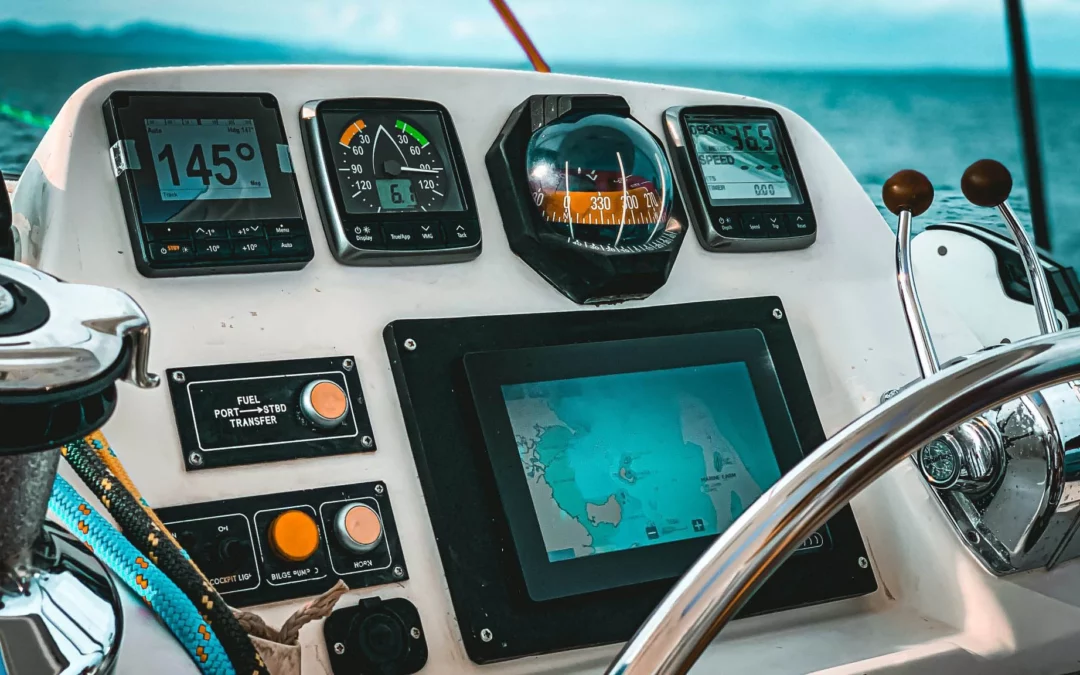
by Barani Chettiar | May 2, 2024 | Uncategorized
Must-Have Navigational Instruments for Safe and Efficient Boating
Introduction: Importance of Navigational Instruments in Boating
Navigating the open waters can be both exhilarating and challenging, especially when faced with changing weather conditions, unfamiliar territories, and potential hazards. In such environments, having the right navigational instruments can make all the difference between a smooth voyage and encountering difficulties. In this article, we’ll explore some must-have navigational instruments essential for safe and efficient boating, highlighting their roles in ensuring precision, safety, and peace of mind on the water.
GPS Systems: Essential for Accurate Positioning
At the heart of modern boating navigation lies the Global Positioning System (GPS), a satellite-based navigation system that provides accurate positioning information anywhere on the globe. GPS systems, whether standalone units or integrated into multifunction displays, offer boaters real-time information about their exact location, speed, and course. With GPS, sailors can navigate confidently, plot routes, and navigate safely, even in unfamiliar waters or adverse weather conditions.
Marine Compass: Reliable Directional Guidance on Water
Despite the technological advancements in navigation, a traditional marine compass remains a crucial tool for boaters. Unlike GPS systems, which rely on satellite signals, a compass provides reliable directional guidance based on magnetic principles. Marine compasses are unaffected by electronic interference or signal loss, making them indispensable for maintaining course and orientation, especially in emergency situations or when navigating without power.
Depth Sounder: Prevents Running Aground in Shallow Waters
Navigating in shallow waters poses a significant risk of running aground, potentially causing damage to vessels and endangering passengers. To mitigate this risk, boaters rely on depth sounders, also known as echo sounders or fish finders. These instruments use sonar technology to measure water depth beneath the boat accurately. By displaying real-time depth readings, depth sounders allow boaters to navigate safely, avoid underwater obstacles, and identify suitable anchorage spots.
VHF Radio: Communication with Other Vessels and Emergency Services
Effective communication is paramount for safe boating, whether coordinating maneuvers with other vessels or calling for assistance during emergencies. Very High-Frequency (VHF) radios serve as the primary communication tool for boaters, offering reliable voice communication over short to moderate distances. VHF radios allow boaters to communicate with other vessels, harbor authorities, and emergency services, providing a vital lifeline in times of distress or when assistance is needed.
Radar System: Detects Objects and Obstacles in Low Visibility
In low visibility conditions, such as fog, darkness, or heavy rain, visual navigation alone may not be sufficient to detect nearby vessels, obstacles, or landmasses. Radar systems provide boaters with an additional layer of situational awareness by detecting and displaying objects in the surrounding environment. By emitting radio waves and analyzing their reflections, radar systems enable boaters to navigate safely, avoid collisions, and maintain awareness of their surroundings, even in adverse weather conditions.
Conclusion: Navigational Tools are Crucial for Safe Boating
In conclusion, navigational instruments are indispensable tools for ensuring safe and efficient boating operations. From GPS systems providing accurate positioning to marine compasses offering reliable directional guidance, depth sounders preventing groundings, VHF radios facilitating communication, and radar systems enhancing situational awareness, each instrument plays a vital role in boater safety. Whether embarking on a leisurely cruise or navigating through challenging waters, having the right navigational tools at hand is essential for a successful and enjoyable boating experience. By investing in quality navigational instruments and familiarizing oneself with their operation, boaters can navigate confidently, mitigate risks, and enjoy the freedom of exploring the open waters with peace of mind.





